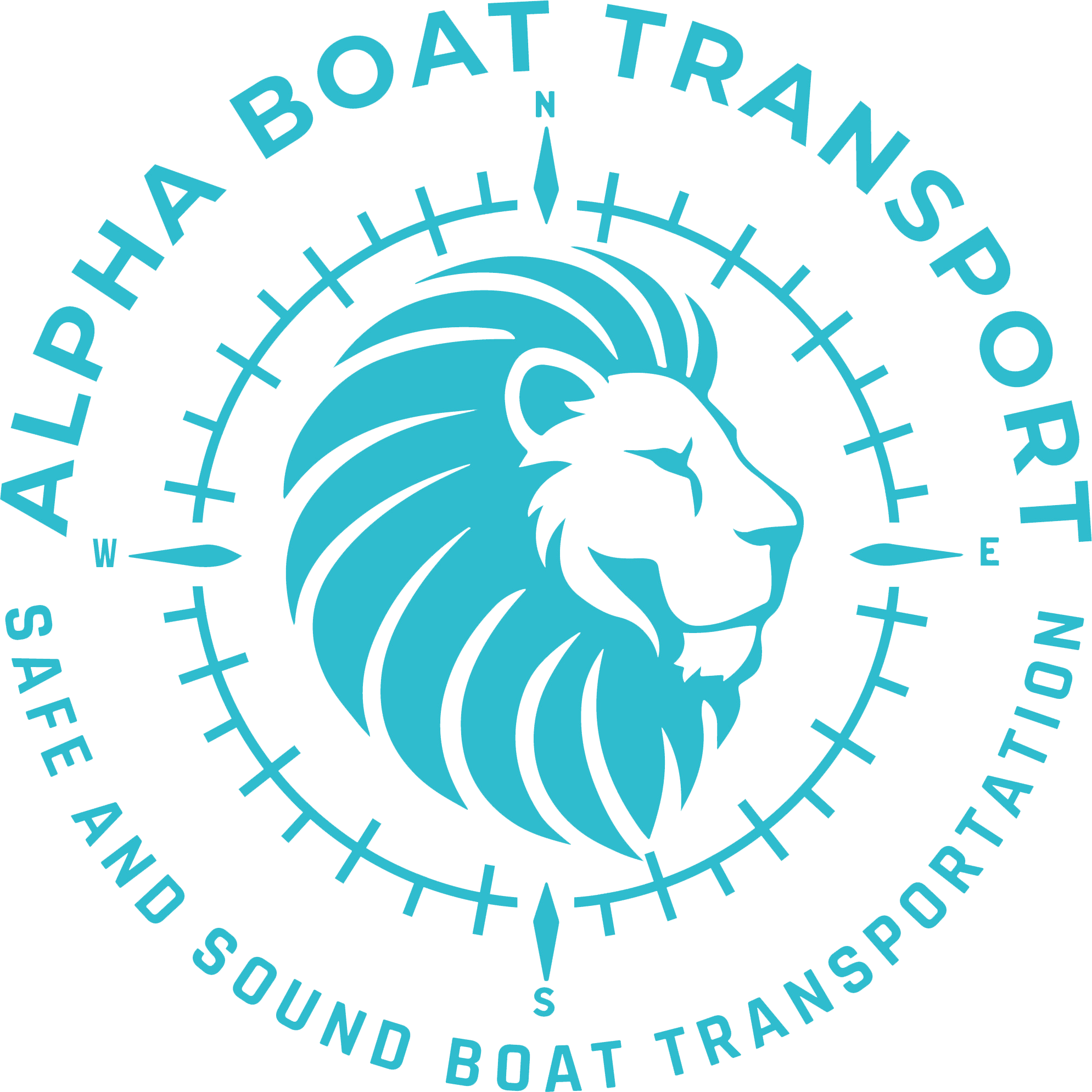Why Yacht Owners Are Facing More Roadblocks Than Ever
You got a big beautiful yacht waiting on the dock. She’s ready to travel cross-country. But suddenly, the whole thing stalls. Why? Let me hit you with this: over 60% of boat transport delays in 2025 came down to outdated route planning and—get this—low bridges nobody accounted for. Yeah. One missed detail, and now you’re stuck rerouting through who-knows-where, spending thousands more. According to Heavy Haulers’ boat transport insights, these headaches are avoidable if you plan smart.
Now, states are laying down new rules like it’s Friday night dice in Little Italy. Florida? Used to allow boats up to 16 feet wide before requiring a survey. Now it’s 14’6″. That 10-inch change costs boat owners days… sometimes weeks. That’s why AI routing in yacht transport services is suddenly the real MVP. In this article, I’m breaking down how smart algorithms are replacing the guesswork with precision—and how smart companies like Alpha Boat Transport are already five nautical miles ahead.
Here’s what you’ll walk away with:
• The real reasons transport delays are spiking
• How AI counters height/weight restriction nightmares
• Why bridge clearance maps matter more than horsepower
• Real-world proof that smarter planning means safer delivery
The Hidden Dangers Lurking in Traditional Routing
Listen, I’ve hauled enough boats to know that guessing your way from Point A to Point B is a losing bet. These aren’t kayaks we’re talking about. We’re talking 28 to 60-foot luxury yachts that ride high when loaded. Simply put — you hit a bridge under 13’6″, and you’re looking at catastrophe.
For instance, take State Route 528 in Central Florida, which has half a dozen underpasses under the 14-foot mark. Without route surveys and modern mapping software, you’d be toast halfway through Orlando.
Now, outdated systems still dominate a chunk of the industry. Paper maps. Manual DOT checks. Gut instinct. You think that works when California changes their axle-to-kingpin ratio regulation overnight? Forget about it. With stricter compliance rules popping up like weeds across New York, Texas, and the Carolinas, relying on old-school methods is like using a flip phone to chart your navigation.
Check this route optimization case from Alpha: they were moving a 40-footer through Arizona. Traditional routes flagged the trip as non-permittable. Their AI tool recalculated using real-time road weight limits and found an alternate path through I-10 that saved both time and permit costs. That’s not luck—that’s tech doing its job.
Texas boat transport is one prime example where route details can make or break your timeline.
How AI Routing Works in Yacht Transport Services
Let’s unpack this tech a little, yeah? AI route optimization, at its core, analyzes real-time data from multiple infrastructure databases—bridge heights, road grades, state-by-state axle pressure tolerances. Then it plans a route that’ll stay inside permit specifications from start to finish. It’s the kind of brainwork no driver or dispatcher could pull off solo in real-time.
Most delays happen not just because of low clearance bridges but because someone didn’t account for weekend transport bans in, say, South Carolina or missed newly implemented axle restrictions in California. AI doesn’t forget. It runs 10,000 route simulations in seconds before anyone shifts a gear.
Companies like Alpha Boat Transport use custom platforms to integrate weight distribution software with AI mapping tools. Meaning? They not only choose a viable route—they prep the exact trailer spec and tie-down method based on surface evaluations.
Ever tried tight-turn backing on a narrow Washington state access road during a rainstorm? Trust me, AI mapping with topographic overlays is the difference between white-knuckle panic and seamless delivery.
Relevant read: Washington boat transport reliability.
Real Stats, Real Stress: Why Delay Isn’t Just Inconvenient
Your yacht sitting on a trailer 3 days longer than planned? That’s not just a schedule mistake. That’s marina late fees. Insurance overlaps. Crew scheduling problems. Broker miscommunications. These things spiral fast. By some estimates, a single day of missed delivery can cost up to $4,200 when you factor in permit reprocessing and trailer rental extensions.
And look—Alpha’s rotatable-load platform saved one client in Florida nearly 22% in fuel and friction damage just by shifting transports slightly to avoid unnecessary inclines. This ain’t just tech-streamlining—this is investment protection.
Remember that stat from earlier? 60% of delays are rooted in bad routing. Let’s anchor that again. Sixty. Percent. These aren’t just delays. They’re preventable, expensive disasters waiting to happen.
Want more Florida-based protocols? Check this: Florida boat transport insights.
State-by-State Permit Pitfalls You Should Know
Here’s a little inside knowledge: some states play nice, some? Not so much. Ohio offers multi-day permits with weekend clearance. Delaware? Damn thing took us nine days to clear due to oversized rear flag alignment issues. California will chuck your paperwork if axle ratios are incorrect by more than 4%. And don’t get me started on New York’s movable restrictions depending on county jurisdictions.
The permit maze isn’t hypothetical. Alpha’s dispatch network utilizes live dashboards tracking overland chokepoints and bridge inspectors’ reports. That means if Colorado moves a restriction zone due to wildfires—Alpha knows before the DOT system updates it officially.
If you’re planning east-coast runs, don’t miss out on New York boat transport prep.
The Role of Trailer Configuration and Weight Distribution
Quick story: I was working a Boston-to-Atlanta route for a dual-engine 35-footer. Weight distribution was off by just 2,500 pounds at the rear axle. The result? A full-scale DOT inspection in Maryland, six hours lost, $980 fine. Why? Improper pre-loading.
AI-enhanced systems now account for factors like bridge arc elevation and suspension fatigue. Alpha Boat Transport uses that tech to actively recalibrate trailer load maps per terrain. It’s like giving your truck a mechanical sixth sense.
Big on trailer prep? Check their boat transport prep guide—worth its weight in gold.
Why Smart Boat Owners Now Expect AI-Based Routing
Here’s the thing: You wouldn’t use outdated navigation software offshore, right? Then why gamble with your yacht on land? Transporting vessels worth six or even seven figures doesn’t leave room for surprises. Modern buyers expect tech to work quietly in the background, shielding them from red-tape fallout and mechanical disasters alike.
Route optimization is no longer bonus—it’s baseline. Companies not offering it? Outdated. Stuck. Behind. Alpha Boat Transport takes AI-integrated logistics and makes it the standard offering, not the premium upsell.
Want transparency? Start here: best boat transport companies comparison.
The Top Features That Set Alpha Boat Transport Apart
So what truly separates Alpha from the pack? Here’s your shortlist:
• AI predictive mapping with 48-state coverage
• In-house permit desk with real-time regulation updates
• Custom trailer fleet configured for variable yacht types
• 24/7 transport monitoring and weather route divergence
• 98.7% on-time delivery rate verified via client transport audits
They’ve got the tech, the trailer arsenal, and—frankly—the street smarts. Whether it’s a long-distance move or city bypass, they’ve done it better… and more often.
Frequently Asked Questions
What is the safest method for yacht transport services?
The safest method combines custom-fit trailers, certified tie-down protocols, and AI-aided routing to steer clear of structural obstacles and weight-restricted paths. Companies like Alpha use all three for maximum protection.
How does AI help with boat transport delays?
AI software scans live permit data, bridge dimensions, and axle-weight laws to proactively avoid shutdowns and DOT violations—cutting delays by up to 30%. It’s a digital scout plotting tension-free routes.
Can oversized boats go through any state?
Not quite. Different states like Florida and California have strict width and height caps. Boats wider than 14’6″ often require route surveys and structural clearance validations. Always check regulations before rolling.
Is yacht transport safe during peak season?
Peak season brings traffic, rushed permitting, and limited hauler availability. AI route tools and vetted transporters like Alpha reduce risks by planning alternate timing and optimized paths.
Are there boat transport restrictions on weekends?
Yep. Some states, especially in the Northeast, prohibit movement of wide loads on weekends or holidays. That’s why smart scheduling backed by AI is critical for zero-delay delivery.
Does the permit process vary per state?
Absolutely. Each state has its own form, timing, fees, and restrictions. Alpha’s permit management team handles these in-house, avoiding lag associated with general brokers.
What’s the biggest cause of transport failure?
Permit errors and miscalculated bridge heights. AI tools solve both by scanning proposed routes against regulatory criteria using real-time updates and digital hazard tagging.

